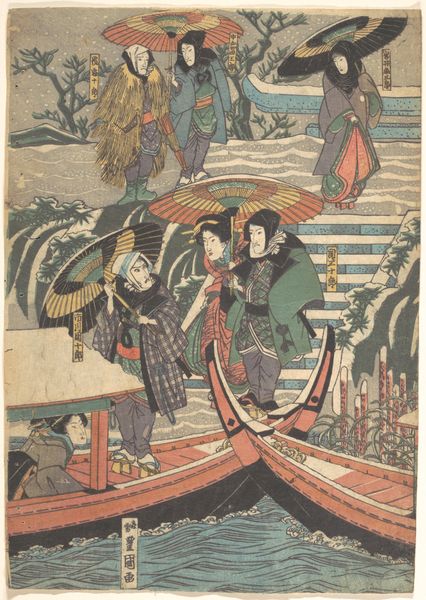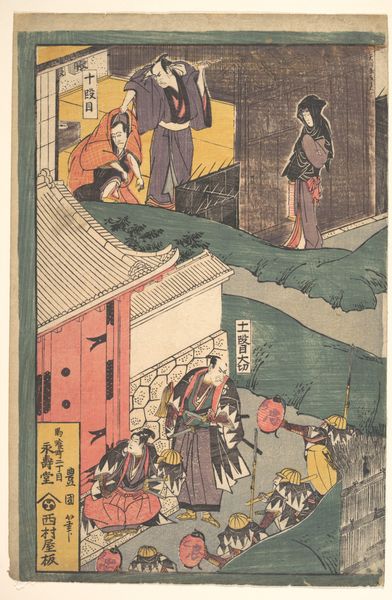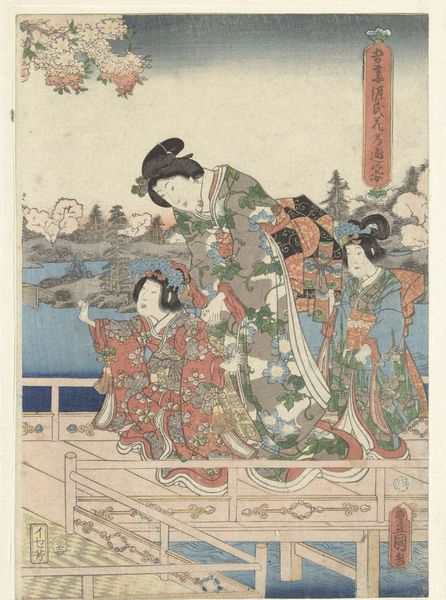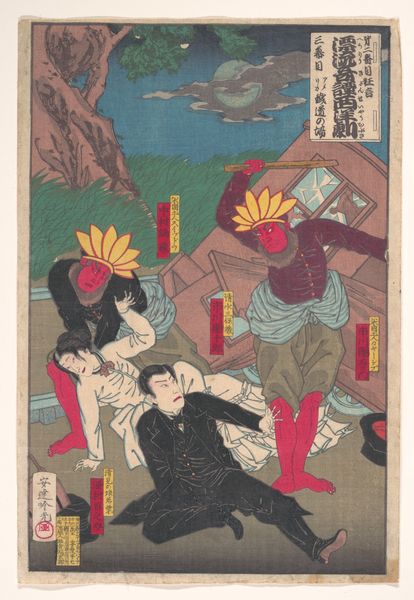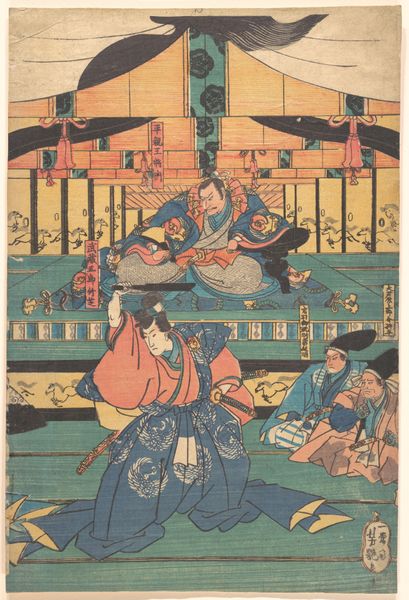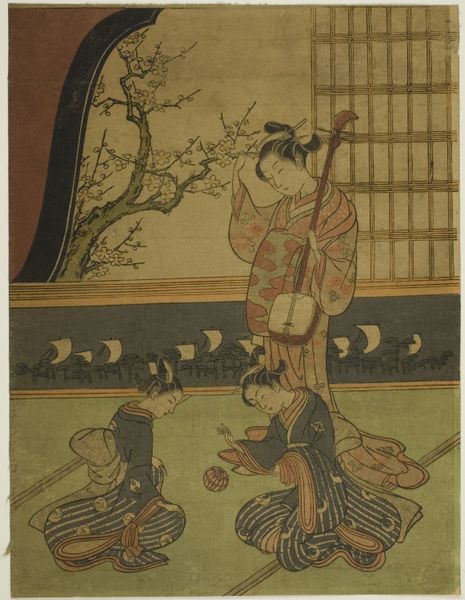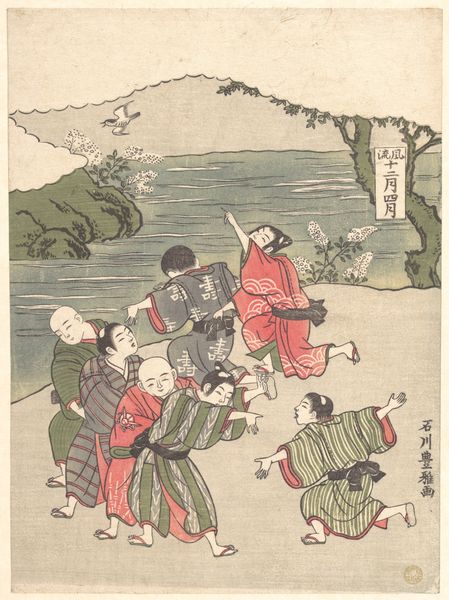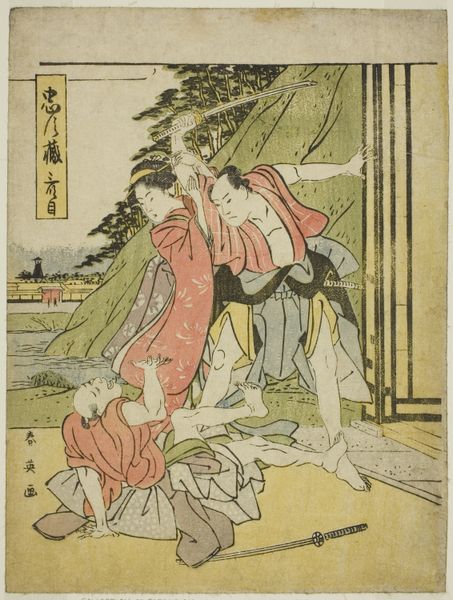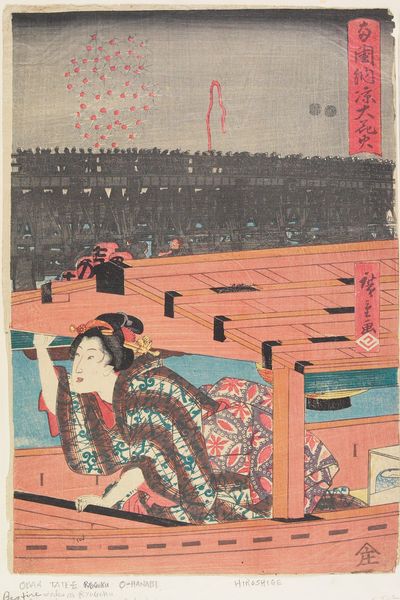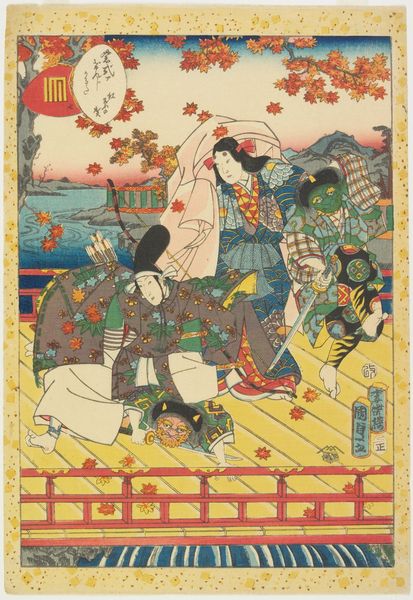
#
snow
#
toned paper
#
water colours
# print
#
asian-art
#
japan
#
handmade artwork painting
#
personal sketchbook
#
tile art
#
coffee painting
#
men
#
watercolour bleed
#
watercolour illustration
#
marker colouring
#
watercolor
Dimensions: Image: 13 5/8 × 9 5/8 in. (34.6 × 24.4 cm)
Copyright: Public Domain
Curator: This print, simply titled "Print," was created by Utagawa Kunisada sometime between 1800 and 1865. It’s currently held at the Metropolitan Museum of Art. Editor: Immediately, the layering catches my eye, that sharp contrast between the figures battling the elements above and those nestled within what looks like a pleasure boat. Curator: Exactly. There’s a clear tension between those experiences. Kunisada situates individuals from different classes and genders within a shared geography, each mediating their relationship to the natural world and its impact on social lives and the economy. Editor: How fascinating! It appears they’ve utilized traditional woodblock printing techniques— I'm noticing that flatness in the color blocks and sharp delineation between the different figures and backgrounds, almost like discrete components brought together. Curator: Yes, the printmaking process enabled Kunisada to disseminate these images widely, making them accessible across various segments of Edo society, fostering discussions about identity, gender roles, and social structures. It's also noteworthy to see that within the sheltered boat women are present in differing gender representations. Editor: You can almost feel the weight of the snow and envision the intensive labor involved in pulling this work. This raises the question: What type of labor and craft traditions did it take for this artwork to reach its consumers? What type of resources were involved? The way the ink clings to the toned paper—it's like looking back through material history. Curator: It's like reading into social and artistic narratives. Editor: A true testament to human ingenuity in both artistic and industrial contexts. It has a timeless quality that speaks to resilience. Curator: Agreed. Studying works such as "Print" allows us to examine both its construction and social implications through these dialogues.
Comments
No comments
Be the first to comment and join the conversation on the ultimate creative platform.

